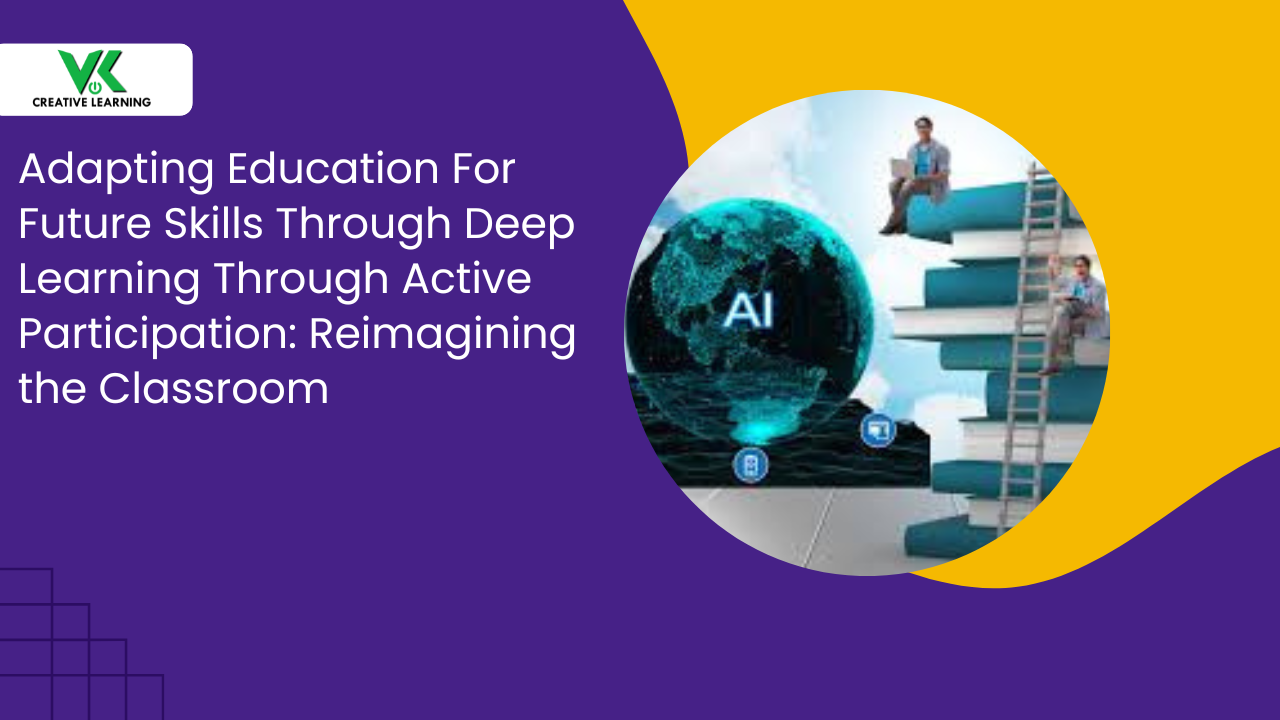Why use eLearning Solutions in Higher Education and How to Implement It?
June 25, 2023
In this modern, technologically-driven, fast-moving era, academic establishments are ardently embracing digital solutions to boost learners' knowledge uptake. And guess what--eLearning exemplifies this trend.
Reason--the surge of eLearning in higher education revolutionizes the ways knowledge is disseminated among students. Essentially, this lets learners find resources and study quicker, as it's just a few clicks away for everyone.
A Look at What eLearning Means for Higher Education
eLearning solutions for higher education refer to the utilization of electronic technologies and resources to deliver study content and facilitate interactive learning experiences. These approaches typically use web-based platforms, digital learning spaces, and interactive resources customized to accommodate the requirements of college and university learners.
Some benefits include unparalleled flexibility for students and instructors alike. By allowing learners to access course materials at their convenience, it caters to a varied range of time constraints and disrupts traditional boundaries in geographical locations.
We shall delve into the myriad of further useful advantages that will be elaborated on soon in this blog.
Considering the numerous advantages, this blog aims to explore practical applications of eLearning platforms in higher education, while sharing valuable insights on their effective incorporation.
Benefits of Using Elearning Solutions in Higher Education
By incorporating eLearning for higher education, colleges and universities can reap a myriad of benefits, explained below.
A. Accessibility: Elearning offers access to varied educational content like videos, animations, notes, and other essential coursework from anywhere, anytime. This allows remote students to participate in classes without being physically present, overcoming geographical obstacles to gaining knowledge.
For example, students residing in remote areas can now join prestigious universities of their preference without worrying about relocating.
B. Flexibility: Through eLearning platforms, students hold the reins to devise their individual timetables and progress at a comfortable tempo. Thus through eLearning for higher learning opportunities, they can hit the books when it suits them--a more customized educational experience.
Importantly, asynchronous learning allows individuals to juggle their academic pursuits alongside personal responsibilities without compromising on either.
C. Cost-Effectiveness: Elearning platforms help to cut down overhead expenditures associated with traditional classroom-based learning--infrastructure, classroom materials, and travel expenses.
Also, institutions can share out these monetary savings towards investing in cutting-edge technologies, broadening course offerings, or improving curricula.
D. Personalization: Elearning platforms enable students to receive personalized feedback and create tailor-made learning paths. Students can target their weak spots by focusing on areas that need improvement using adaptive learning modules tapped into their past performances.
E. Introverted Learners and Gamified Activities:
People who were introverted learners may find the digital classroom less daunting, while others might partake in gamified activities that make earning complex subjects fun and engaging. These tools not only elevate student enjoyment but also foster a robust learning environment conducive to better absorption of knowledge.
E. Improved Student Engagement: Elearning solutions for higher education offer a fascinating learning journey via multimedia elements--animations, interactive quizzes, and lifelike simulations. Breathing new life into academia, these innovative methods unveil hidden capabilities, presenting an exhilarating adaptation to the educational journey.
F. Enhancing Collaboration and Communication: In the digital realm, eLearning platforms foster peer-to-peer connections via discussion boards, messaging spaces, and virtual team endeavors on a global scale, broadening students' horizons and strengthening vital interpersonal abilities--a need of the current modern job market.
Strategies for Successful Implementation of Elearning Solutions in Higher Education
Leveraging eLearning technology allows institutions to develop captivating and efficient educational opportunities tailored to varied students. However, achieving this requires smart strategic approaches that are explained below.
A. Assess the Needs of Students, Faculty, and the Institution: Two crucial aspects to mull over include evaluating the requirements of learners, instructors, and the establishment and determining possible hurdles to success.
Evaluating the requirements of diverse stakeholders necessitates carrying out questionnaires and arranging concentrated discussions involving learners, academicians, and managerial personnel.
These data-gathering platforms help institutions to find weak spots and discover where eLearning can fill those gaps.
For instance, some students need extra help understanding tough ideas, while others do better with adjustable class timings. Similarly, professors could gain from tools that streamline tasks such as grading or lesson planning.
B. Identify Potential Barriers to Success: Besides knowing user needs, spotting possible obstacles is key to smooth eLearning adoption. One barrier might be insufficient infrastructure--from inadequate internet connectivity to outdated hardware and software.
Another challenge may stem from an institution's culture that resists change or lacks adequate training programs to familiarize stakeholders with new technologies. Spotting hurdles early would help colleges and elite institutions to create focused plans to tackle them and make eLearning adoption easier.
C. Consider Features, Budget, and Scalability: In our modern tech-filled world, universities must choose eLearning tools that suit their unique needs and drives. One pivotal element in this undertaking involves weighing the attributes, financial plan, and expandability of diverse eLearning systems.
For example, an all-encompassing platform presenting a diverse array of multimedia instruments, along with a flawless merger with virtual meetings and additional communication avenues, will significantly amplify the educational journey for pupils and teachers in equal measure.
Besides, it's crucial to find that sweet spot for merging intricate and simple platforms--one that astutely combines various learning techniques without breaking the bank.
To achieve this, institutions can approach eLearning development companies. They can easily customize requirements to incorporate additional features over time in the existing platform too or give an entirely new makeover to the current digital platform.
This ensures that resources are not squandered on excessively complex systems when simple alternatives could suffice.
D. Evaluate Ease of Use for Both Students and Faculty: The efficacy of eLearning hinges upon its simplicity for all participants--learners and educators alike require intuitive interfaces that grant them entry to vital resources without any rigmarole. In a nutshell, smooth sailing in the digital learning realm is the key to unlocking academic triumphs.
An optimally designed eLearning platform for advanced education should undoubtedly possess a highly accessible interface, facilitating swift configuration and minimal disruptions for all participants.
To facilitate this seamless progression, higher education establishments ought to carry out comprehensive assessments of their selected eLearning systems.
For instance, with eLearning solutions hosting diverse focus groups--including tech-savvy students and less techy staff--, you as an educational institute will gain priceless knowledge about what's user-friendly and straightforward.
Input from these groups can subsequently be harnessed, enabling the further polishing of the platform's intricacies.
Conclusion
eLearning solutions can enhance higher education by offering a myriad of features along with an array of accessibility options. So if you have a higher education institute keen on getting an e-learning solution developed with an intuitive user interface and scalable capabilities, then VK Creative Learning can be the apt choice.
With vast years of experience in the Elearning domain and creating varied types of eLearning educational solutions, you can rest assured that VKCL will deliver precisely what you want.




